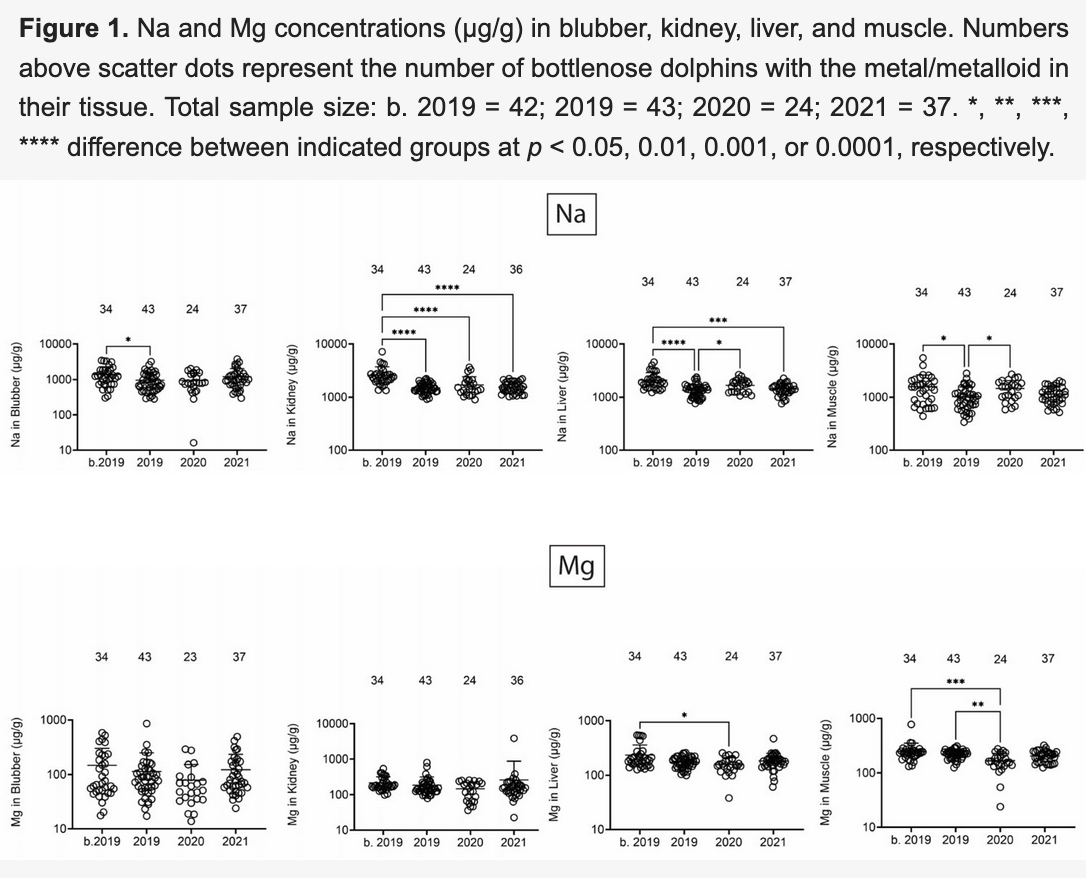
Authors: Nelmarie Landrau-Giovannetti, Ryanne Murray, Stephen Reichley, Debra Moore, Theresa Madrigal, Ashli Brown, Ashley Meredith, Christina Childers, Darrell Sparks, Moby Solangi, Anna Linhoss, Beth Peterman, Mark Lawrence, and Barbara L.F. Kaplan
Abstract
In 2019, an unusual mortality event (UME) affected bottlenose dolphins (Tursiops truncatus) in the Mississippi Sound (MSS) following an extended dual opening of the Bonnet Carré Spillway (BCS), which prevents flooding in New Orleans. This resulted in low salinity, skin lesions, and electrolyte imbalances in dolphins. Additionally, the influx likely altered the MSS’s environmental chemical composition, including levels of heavy metals and metalloids; thus, we quantified heavy metals, metalloids, and essential elements in the tissues of dolphins that stranded in the MSS before and after the 2019 UME. We hypothesized that levels of heavy metals and metalloids (such as mercury (Hg), arsenic (As), lead (Pb), and cadmium (Cd)) would not show significant changes post-UME. Indeed, we found no major changes associated with the UME in most metals; sodium (Na) and magnesium (Mg) levels were lower in several tissues after 2019, which correlated with the average yearly salinity measured from the MSS. Toxic metals and metalloids were detectable with some changes over time; however, the selenium (Se):Hg molar ratio increased in some tissues post-2019. Additionally, we confirmed that Hg can bioaccumulate, with positive correlations between Hg levels and dolphin size as assessed by straight length. Overall, our findings indicate that freshwater incursions into the MSS can alter dolphin exposure to essential and toxic elements.
Read the full publication at https://doi.org/10.3390/toxics13060511.